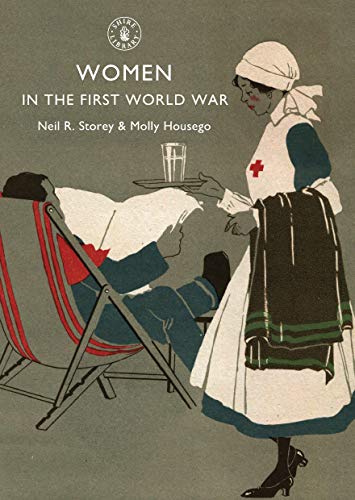Women In The First World War
Usually shipped within 24 hours
UK deliveries from £5.95
Delivery & Returns
Delivery & Returns
We use the Royal Mail, DHL Express or UPS for our customers. For UK addresses, deliveries under 10kg are a standard £4.95 via Royal Mail Tracked 48 Service. For orders over 10kg and overseas customers, postage is calculated for you at checkout once you have entered your postal address. This price, does not include any potential custom charges that may apply, depending on the product or destination, as every country has very different import duties / taxes. Online exclusive products (such as trainers) will be delivered to you directly from the printer, separate from other items in your order, but your postage fee covers ALL items in your order.
If you are unhappy with your purchase, please email shop@tankmuseum.org within fourteen (14) working days of receiving your goods, and return it to us at the address below, in its original condition, unopened (with any seals and shrink-wrap intact) and we will issue you a full refund or replace it. Goods must be returned at your own cost. If the item is faulty, you do not need to return it, we will send you a replacement free of charge.
Description
Description
By Neil R. Storey and Molly Housego
Paperback
The First World War was the conduit for some of the most dramatic changes in the role of women in British society. Suffragettes gave up their militant protests to support the war effort, and from the moment war broke out women were ready; many had already trained as military and Voluntary Aid Detachment nurses.
As more and more men left to serve in the armed forces more and more jobs, most of them pre-war preserves of men, were taken over by women, from postal deliveries to tram clippies, and delivery drivers to land workers.
The public outcry over the 'Shells Scandal' of 1915 led to unprecedented pressure to employ more women. The women were willing and 30,000 of them voiced their demand in one of the largest protest marches through London under the banner of 'We demand the right to serve.' And so they did, as the munitions factories expanded, and by the end of the war new military units such as the WAAC, WRENS and WRAF were created.
Told through historical documents, memoirs, photographs, uniforms and ephemera the authors present a study in empathy of those dramatic times, from women serving as nurses both at home and on the frontlines, to serving in weapons and other factories throughout Britain, to the uniforms and legacies of these brave volunteers.
![Women In The First World War Book [variant_option4]](http://tankmuseumshop.org/cdn/shop/files/9780747807520-uk.jpg?v=1748338752&width=1214)

![Women In The First World War Book [variant_option4]](http://tankmuseumshop.org/cdn/shop/files/9780747807520-uk.jpg?v=1748338752&width=88)
![Christmas Tank Museum Wrapping Paper - Two sheet pack Wrapping Paper [variant_option4]](http://tankmuseumshop.org/cdn/shop/files/DSC2318.jpg?v=1759225755&width=176)
![Women In The First World War Book [variant_option4]](http://tankmuseumshop.org/cdn/shop/files/9780747807520-uk.jpg?v=1748338752&width=640)



